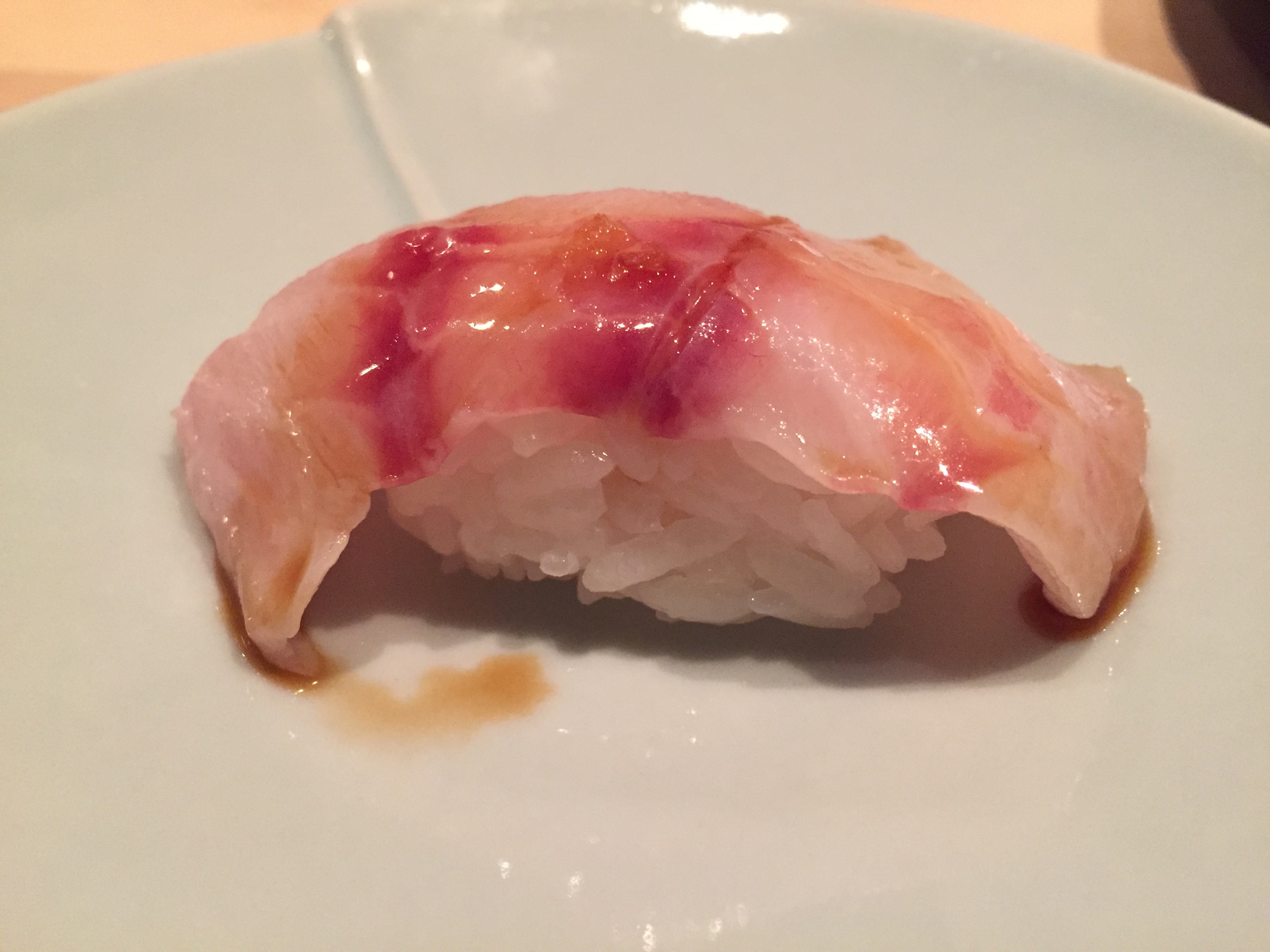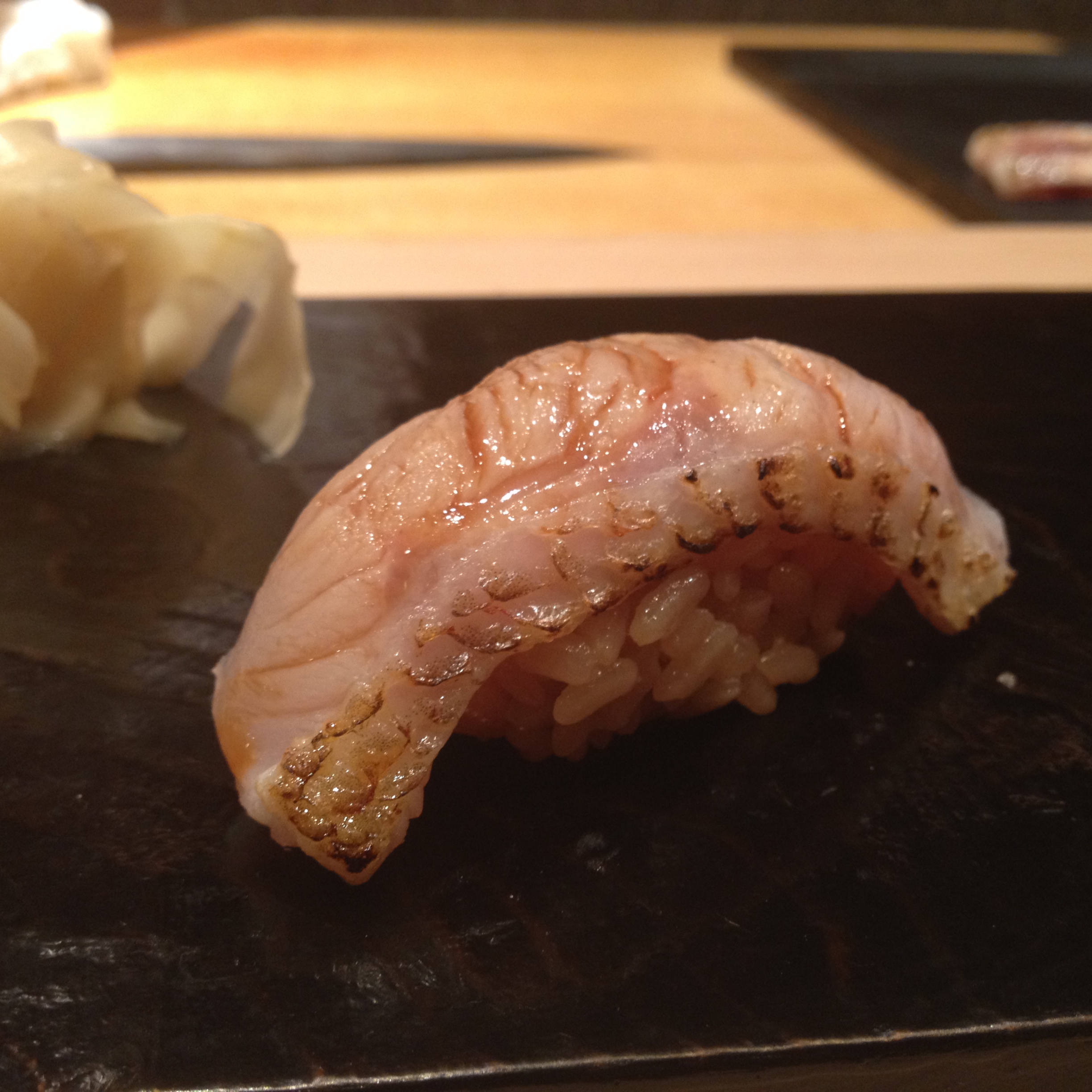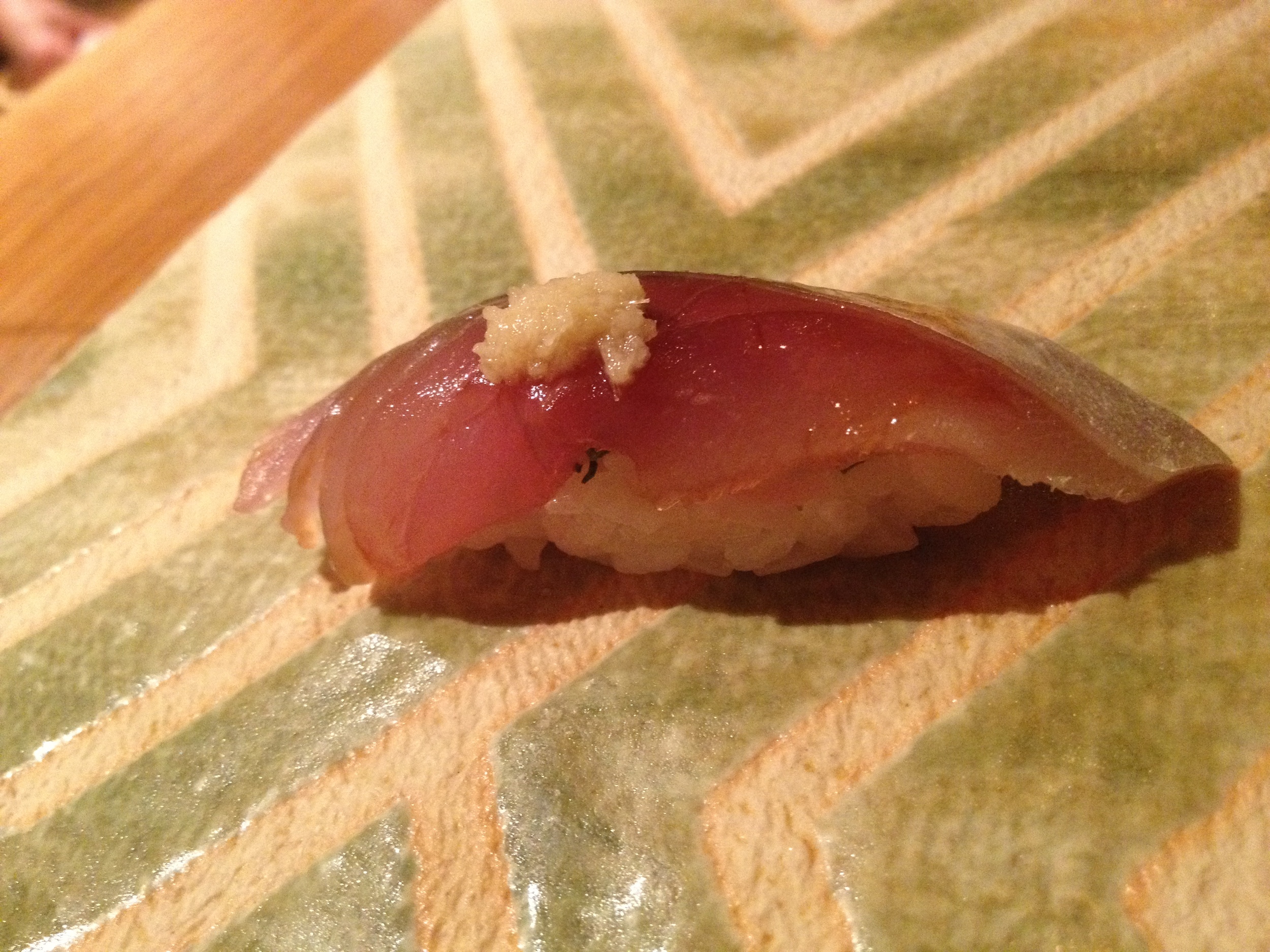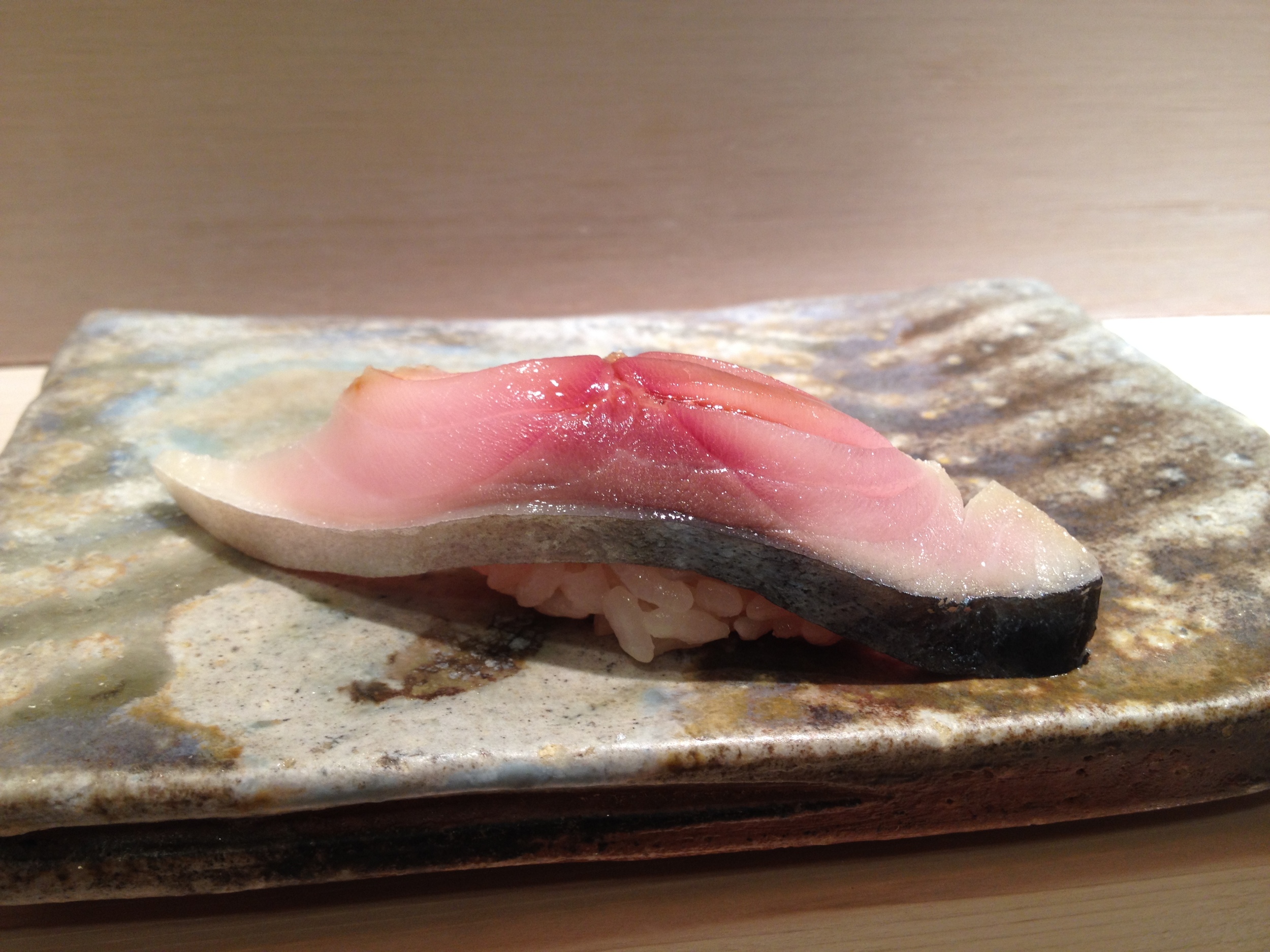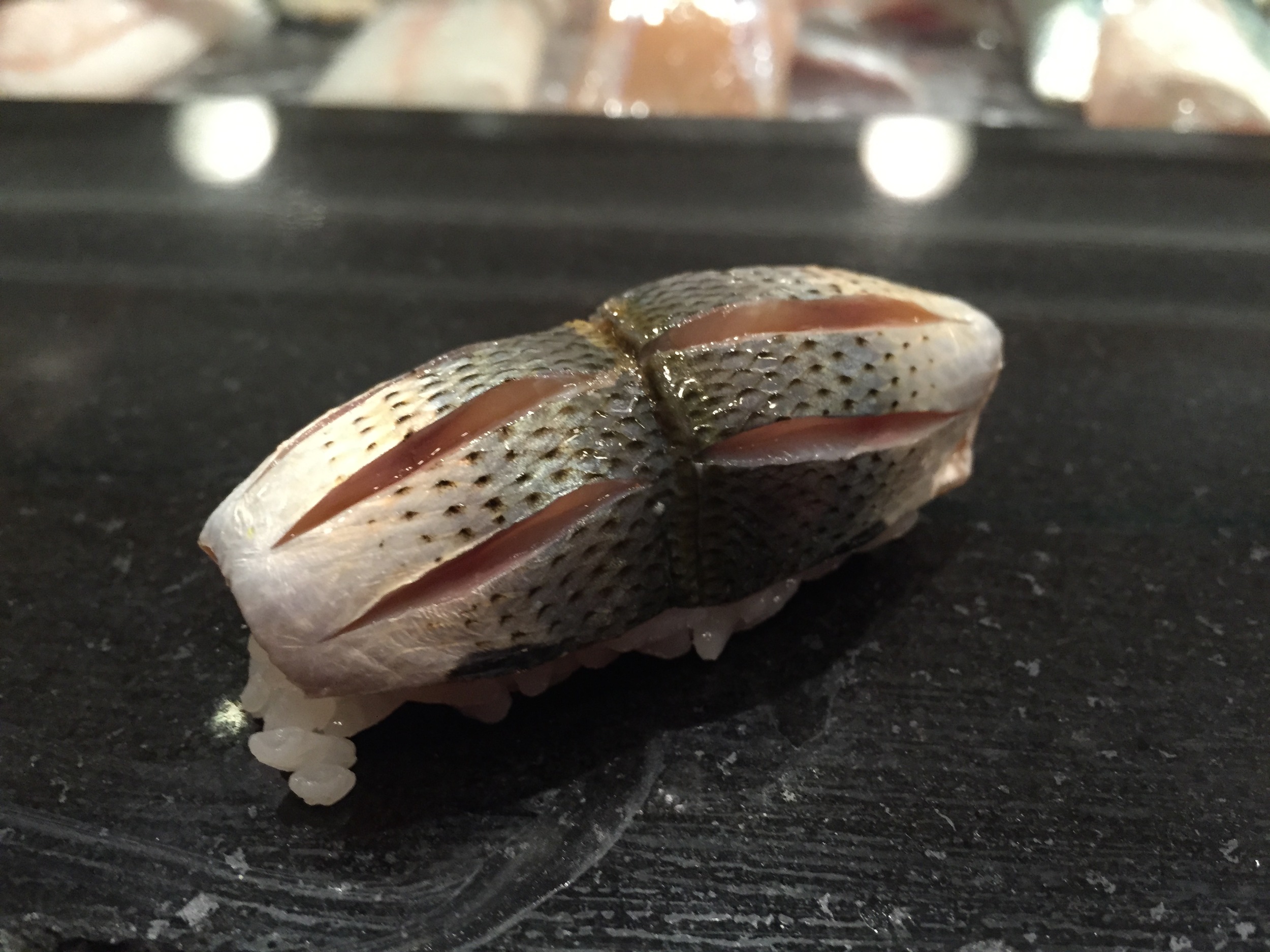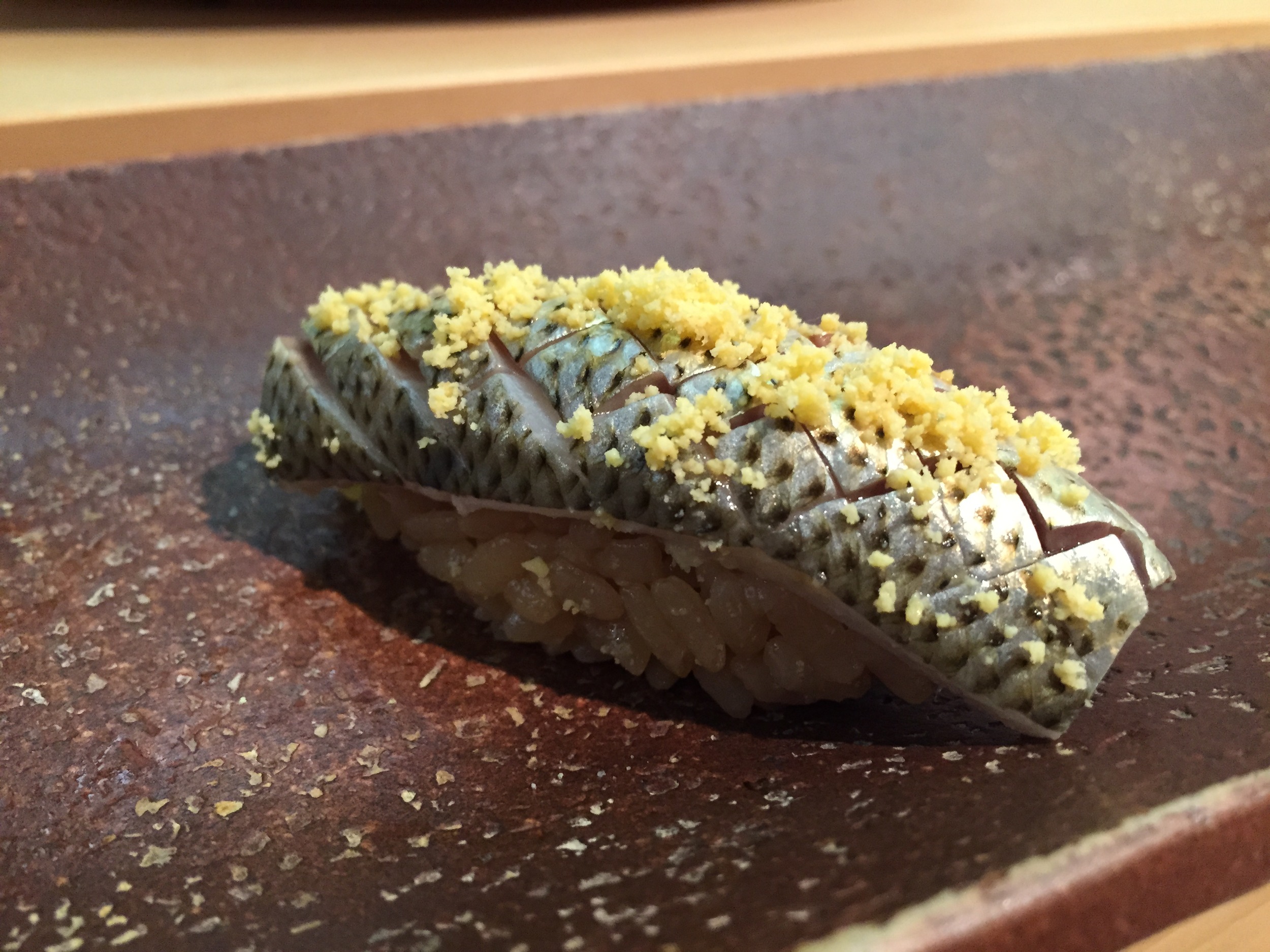Technique is one of the things I spend a lot of time thinking about when I eat a sushi meal, and it is probably one of my best barometers for comparing different sushiya. In my mind there are primarily four equally important components to technique:
1. Neta: neta quality is usually a function of 1) how much a sushiya is willing to charge customers and 2) the strength of a chef's supplier connections. But the preparation, storage, and aging of neta can have a huge impact on the overall taste and experience. Good neta can be vastly diminished by storing it improperly, or serving it at the wrong temperature.
2. Shari: although shari is the cheapest ingredient in sushi, it is arguably one of the most difficult aspects to get right. Cooking rice from scratch and seasoning it, all whilst trying to maintain a consistent temperature, is quite difficult. Over time, rice changes in temperature, and may change texture and consistency over the course of a meal. Producing a consistent product thus requires an incredibly high level of skill and attention. My biggest gripe with sushiya outside of Japan is that often the shari is an afterthought. That's like saying you can build a great sandwich by not paying any attention to the bread, or a great pizza without caring about the dough.
3. Balance: sushi is the marriage of neta and shari, and changes in the proportion of either can vastly affect the flavor profile and overall impact. Many American sushiya ignore this critical aspect of sushi, and alternate between using the shari as a way to fill up customers or as simply a delivery vehicle for huge slices of fish. With sushi, bigger is not always better.
4. Precision: sushi is very simple food. There is little that can be done via cooking, saucing, or accoutrements to mask a chef's skills. Everything is laid bare. For this reason, the importance of small details is amplified. Chefs are forced to pay attention to minute details regarding taste (has the fish been aged? for how long?), temperature (both for the neta and shari), texture (is the nori crisp? is the shari too hard or soft?), and seasoning (is the shoyu too salty or too sweet? is the wasabi overpowering?).
A chef's specific technique incorporates the above aspects of sushi into what they believe provides the optimal experience. Maybe unsurprisingly, views on this aforementioned 'ideal' vary widely. I've tried to show a few examples for some of these aspects below.
example 1. aging
As mentioned elsewhere, fish, like other types of meat, can be aged to a specific flavor and texture. The exact length depends on the type of fish and the skill level of a particular chef.
As sushi before the 19th century was a preserved food ("funazushi"), aging fish also has its roots in Japanese history. Some sushiya (primarily, Michelin-starred Sushi Kimura) endeavor to recreate these traditions by carefully aging fish to extreme lengths of time, sometimes upwards of 30 days.
L to R: Chutoro aged 2 days (Sushi Zen, NY), 10 Days (Sushi Sho, Tokyo), 13 Days (Ichimura, NY)
example 2: shari (texture, seasoning, and temperature)
As the origins of sushi are as a preserved food, traditional seasonings tend towards acidic and salty preservatives like shoyu, vinegar or citrus. This extends to the shari. Sushiya focused on traditional technique (like Sukiyabashi Jiro or Sawada) may thus heavily season their rice. Other shops may choose seasoning on how it best pairs with certain neta, such as Tokami's use of akazu to pair with maguro.
Likewise, sushiya also differ in their views at which temperature shari should be served. Some shops (like Jiro, or in America, Nozawa/Sasabune) insist on warm rice, while other sushiya believe body temperature is the ideal. Other shops, like those in the "Shou" school, may serve different temperature rice with different neta.
L to R: Nigiri from Kanoyama (NY), Miyaha (Tokyo), Tanoshi (NY), Nozawa (LA), Sushi Sho (Tokyo), Sushi Tokami (Tokyo). Arranged in approximate order of increasing flavor in shari strength.
example 3: nigiri size
Before the later half of the 20th century, sushi was served as a street food to fill up customers on the go. Even in Tokyo, there is a marked contrast to the size of nigiri found in older shops in neighborhoods like Shinbashi and Nihonbashi and trendier, Michelin-starred restaurants in Ginza.
L to R: Contrast and compare of some nigiri shapes and sizes: Ichimura (NY), Kanoyama (NY), 1 or 8 (NY), Umi (Tokyo), Sukeroku (Tokyo), Sushi Yasuda (NY).
example 4: slicing technique
The way neta is sliced can have a significant impact on the balance, texture, and 'heaviness' of nigiri, and a chef can adjust the effect on a diner by altering the slicing style. This is perhaps most apparent through several well-established styles for hikari mono, all of which are meant to exhibit a chef's skill level, and all of which impact the diner in different ways.
L to R: Saba nigiri in single-layer (Umi, Tokyo), double-layer (Ichimura, NY) and triple-layer (Ushiwakamaru, NY).
L to R: Various popular kohada slicing styles: Tanoshi (NY), Umi (Tokyo), Sukeroku (Tokyo), 15 East (NY), Sushi Sho (Tokyo).






